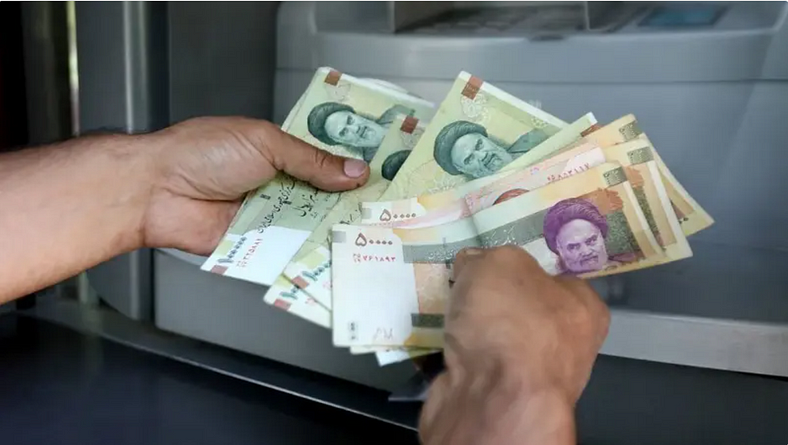Iran’s Currency Crisis: How Geopolitical Tensions Are Crushing the Rial

Imagine waking up to find your life savings cut in half overnight — this is the harsh reality for millions of Iranians as their currency collapses under the weight of sanctions and geopolitical turmoil.
Iran’s rial has plummeted to a historic low, breaking the psychological barrier of 1,000,000 rials per US dollar for the first time. According to Bonbast.com, which tracks live exchange data, the currency hit an unprecedented 1,039,000 rials to the dollar this week. This staggering depreciation marks a more than 50% drop since President Masoud Pezeshkian took office last year, leaving ordinary Iranians struggling to afford basic goods amid skyrocketing inflation.
The crisis stems from the renewed “maximum pressure” campaign by the Trump administration, which has imposed four rounds of sanctions targeting Iran’s oil exports — its economic lifeline. With oil revenues slashed and foreign currency reserves dwindling, Iran’s ability to stabilize its economy has severely weakened. The rial, which traded at around 55,000 to the dollar before sanctions were reinstated in 2018, has now become one of the world’s worst-performing currencies.
Diplomatic tensions have only worsened the situation. After Trump sent a letter to Supreme Leader Ali Khamenei, threatening military action if Iran’s nuclear program isn’t reined in, Khamenei dismissed the offer for talks as “deception.” Foreign Minister Abbas Araghchi echoed this stance, declaring negotiations impossible unless the U.S. changes its policies. This deadlock has fueled fears of an impending conflict, further spooking investors and accelerating capital flight.
With annual inflation soaring near 40%, Iranians are desperately seeking safe havens for their savings — buying dollars, euros, or gold to shield themselves from the rial’s freefall. This rush into hard currencies has created a vicious cycle, driving the rial even lower. Meanwhile, the government’s attempts to stabilize the exchange rate through central bank interventions have failed, as black market rates continue to surge.
The human cost is devastating. Families watch helplessly as their purchasing power evaporates, while businesses struggle with import costs and supply shortages. Unless there’s a breakthrough in U.S.-Iran relations or a shift in economic policy, the rial’s collapse shows no signs of stopping — leaving Iran’s economy, and its people, in peril.
Iran’s rial has plummeted to a historic low, breaking the psychological barrier of 1,000,000 rials per US dollar for the first time. According to Bonbast.com, which tracks live exchange data, the currency hit an unprecedented 1,039,000 rials to the dollar this week. This staggering depreciation marks a more than 50% drop since President Masoud Pezeshkian took office last year, leaving ordinary Iranians struggling to afford basic goods amid skyrocketing inflation.
The crisis stems from the renewed “maximum pressure” campaign by the Trump administration, which has imposed four rounds of sanctions targeting Iran’s oil exports — its economic lifeline. With oil revenues slashed and foreign currency reserves dwindling, Iran’s ability to stabilize its economy has severely weakened. The rial, which traded at around 55,000 to the dollar before sanctions were reinstated in 2018, has now become one of the world’s worst-performing currencies.
Diplomatic tensions have only worsened the situation. After Trump sent a letter to Supreme Leader Ali Khamenei, threatening military action if Iran’s nuclear program isn’t reined in, Khamenei dismissed the offer for talks as “deception.” Foreign Minister Abbas Araghchi echoed this stance, declaring negotiations impossible unless the U.S. changes its policies. This deadlock has fueled fears of an impending conflict, further spooking investors and accelerating capital flight.
With annual inflation soaring near 40%, Iranians are desperately seeking safe havens for their savings — buying dollars, euros, or gold to shield themselves from the rial’s freefall. This rush into hard currencies has created a vicious cycle, driving the rial even lower. Meanwhile, the government’s attempts to stabilize the exchange rate through central bank interventions have failed, as black market rates continue to surge.
The human cost is devastating. Families watch helplessly as their purchasing power evaporates, while businesses struggle with import costs and supply shortages. Unless there’s a breakthrough in U.S.-Iran relations or a shift in economic policy, the rial’s collapse shows no signs of stopping — leaving Iran’s economy, and its people, in peril.


Comments
Post a Comment